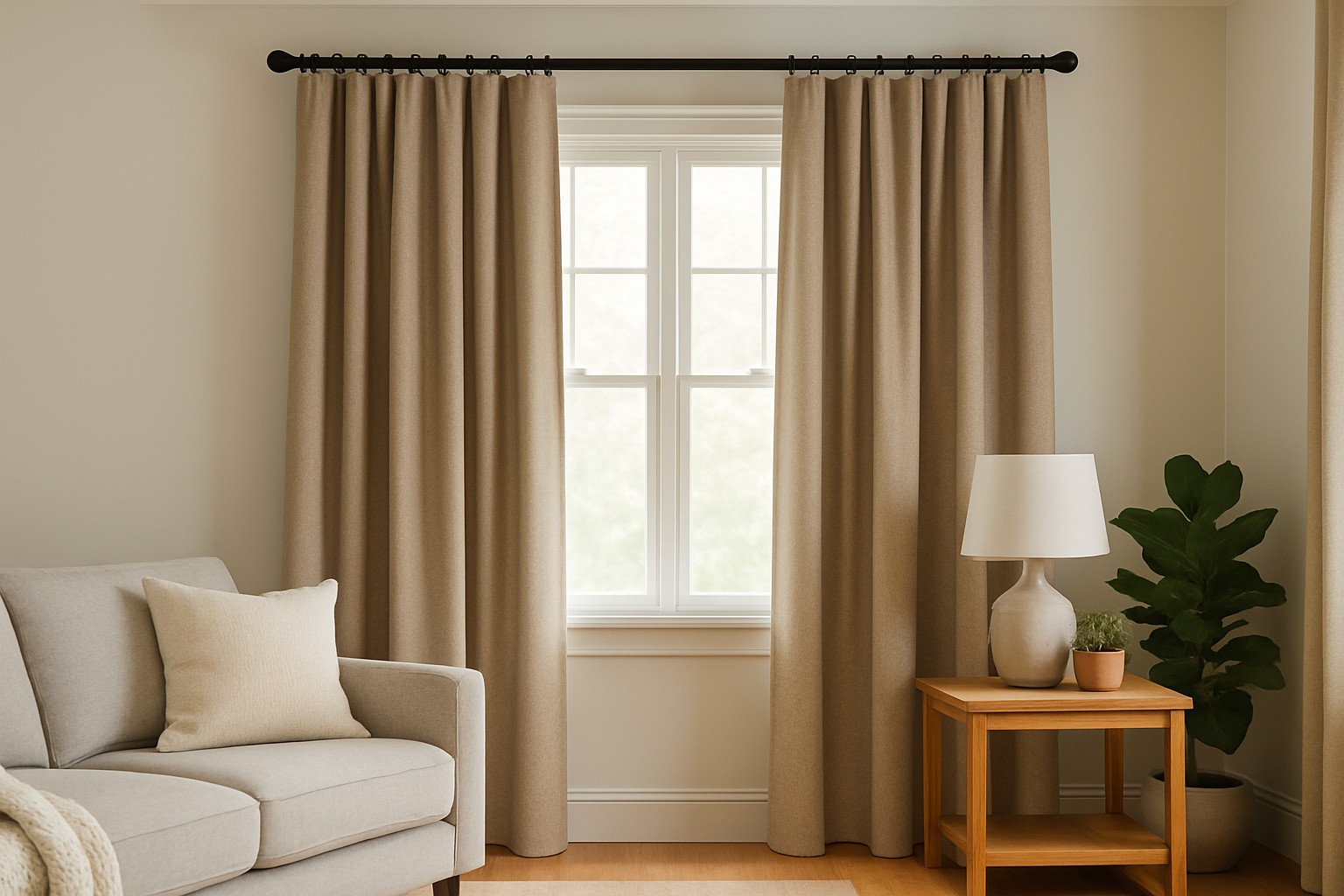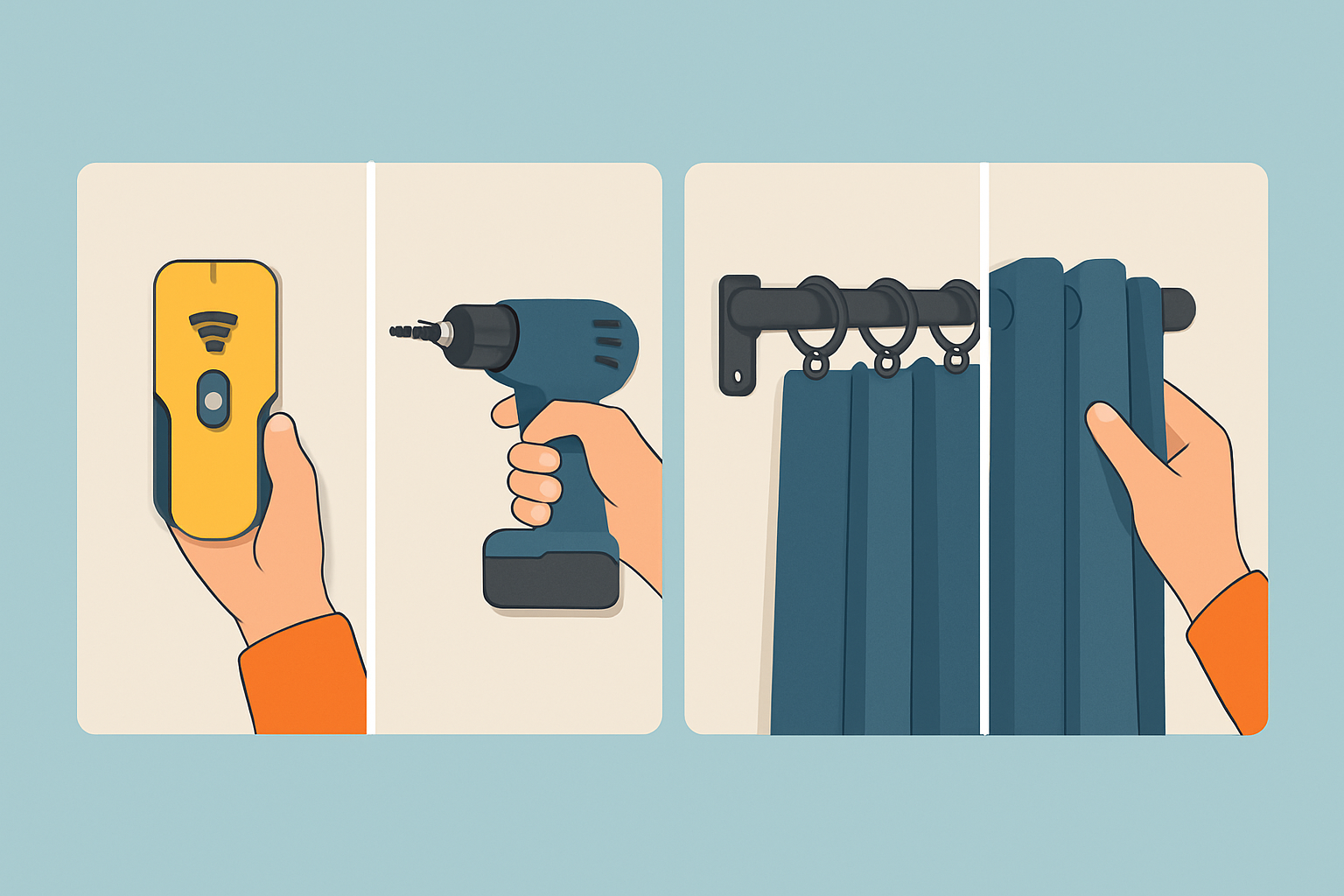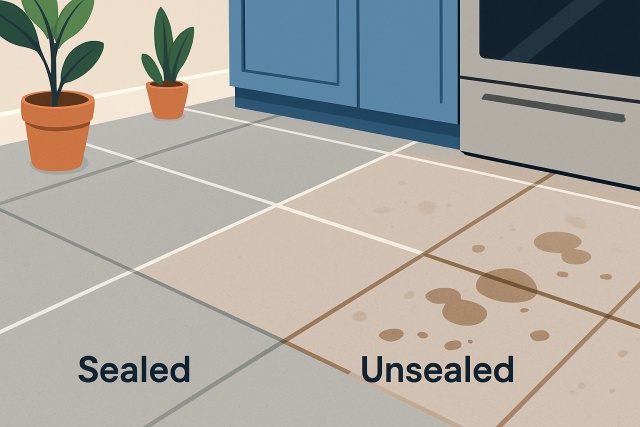Hanging Heavy Curtains Without Damaging Your Walls

This article guides you through hanging heavy curtains safely without leaving your walls worse for wear.
- Discover how to choose the right hardware and tools to hang heavy curtains securely while keeping your walls unscathed.
- Follow simple step-by-step instructions for finding studs and using anchors because a sturdy setup beats a quick fix.
- Explore no-drill solutions like tension rods and ceiling tracks that are perfect for renters or anyone with delicate walls.
- Pick up maintenance tips to keep your heavy curtains and fixtures looking sharp and strong for years.
Hanging heavy curtains can truly transform the look and coziness of a room but if you don’t get the installation right you could be left with some pesky wall damage like holes or cracks. Those thick heavy drapes really put your mounting hardware through its paces so picking the right tools and techniques is essential to keep everything snug and secure.
Taking a Closer Peek at the Real Challenges of Hanging Heavy Curtains
Heavy curtains bring the perfect combo of privacy, insulation and style but their weight can cause problems if your walls aren’t up to the task. Common headaches include drywall cracking around screws, brackets failing because they weren’t anchored properly and curtain rods that lose balance and fall. I’ve noticed that people new to hanging heavy curtains often use lightweight hardware or anchor straight into drywall instead of studs. That usually ends in disappointment. Without proper supports and a good check on the curtain weight, your mounting can fail, leaving wall damage and a bill.
What You’ll Need to Hang Heavy Curtains (Without Breaking a Sweat)
- A sturdy curtain rod ready to handle even the heaviest curtains without breaking a sweat
- Mounting brackets designed to support thick weighty drapes hanging in your space
- Reliable wall anchors like toggle bolts or molly bolts because drywall can be tricky and you want your curtains staying put
- An electric drill with the right drill bits to make pilot holes like a pro
- A stud finder to take the guesswork out of locating the wall framing—you’ll thank me later
- A level to ensure your curtain rod sits perfectly straight with no wonky lines
- Measuring tape for nailing down exact placement and spacing because eyeballing it rarely works
- Strong screws that fit your brackets just right and hold everything together like a trusty sidekick
- A screwdriver or power driver to make the whole installation less of a workout
- A pencil or masking tape to mark your spots—small details that save you big headaches
Getting Your Walls and Workspace Ready
Alright, before you dive in, let’s talk about setting the stage—your walls and workspace need a little TLC first. Think of it like prepping the canvas before you splash on the paint. A clean, smooth surface not only makes the job easier but also saves you from those annoying surprises later on. So, grab your cleaning supplies and get ready to clear the deck—it’s totally worth the effort!
Clear away anything blocking your windows and give yourself plenty of elbow room. This makes the whole job safer and much less frustrating. Grab a stud finder and track down those studs lurking behind the wall because they are your best bet for holding up heavy curtains without any fuss. Mark those stud spots gently with a pencil, just enough so you don’t forget but not so much that you’re sketching the next art masterpiece. If the studs happen to be playing hard to get where you want your curtains, don’t worry. Just figure out where wall anchors will come to the rescue.
Step-by-Step Guide to Hanging Heavy Curtains Without Putting a Dent in Your Walls
Start by using the stud finder to locate and clearly mark all the studs near where you want to hang the curtain rod. This simple step saves a lot of headaches later.
Measure your curtains' width and choose a rod position that allows the curtains to extend beyond the window frame. This creates the perfect balance of coverage and light control.
Mark the bracket drill points at least 4 to 6 inches above the window frame and about 3 to 6 inches beyond each side of the window. This not only looks cleaner but also improves functionality.
Drill pilot holes at these marks to avoid any wall cracks. Make sure to use a drill bit that matches your wall type and anchor size because this makes all the difference.
If your marks don’t line up with studs, don’t worry. Use heavy-duty wall anchors like toggle bolts or molly bolts for extra support and peace of mind.
Screw the mounting brackets in securely, making sure they sit tight and flush against the wall. No wobbly business here.
Place the heavy-duty curtain rod onto the brackets, checking it fits snugly and sits evenly. You want it steady, not wobbly.
Hang your heavy curtains and spread the fabric out evenly. This balances the weight and reduces pressure on each bracket—your curtains will appreciate it.
Finally, give the curtains a gentle tug to test their stability. Adjust anything small if needed to get it just right.

Always handle tools with care and never skip wearing safety goggles when drilling or fastening brackets. It is a small step that can save you from a world of hurt. Spread the curtain weight evenly across the brackets and don’t hesitate to add extra supports if you’re dealing with wider windows because your curtains will thank you. Before you hang those curtains, double-check that all screws and anchors are snug as a bug in a rug.
Other Handy Tips to Keep Your Walls Looking Sharp
- Go for tension rods made specifically for heavy curtains that fit snugly between window frames so you can avoid drilling holes or damaging your walls.
- Think about ceiling-mounted curtain tracks that spread the weight across the ceiling because ceilings usually handle heavy loads much better than walls. It’s like giving your curtains a comfy overhead hammock.
- Pick heavy-duty adhesive hooks designed to hold serious weight. This is a clever drill-free solution that’s especially renter-friendly and keeps landlords happy.
- Try curtain wire systems anchored to opposite walls or the ceiling. They offer a flexible setup that helps minimize any wall damage.
- Consider freestanding curtain rods or decorative room dividers. These are perfect temporary or stylish options that keep your walls completely out of the picture.
Alternatives like tension rods and adhesive hooks let you hang curtains without leaving a mark but they often come with their own quirks—like limited weight capacity or not playing nice with certain curtain styles. Ceiling-mounted tracks are great for handling heavy drapes without breaking a sweat though be ready for a bit of a hands-on installation process. Freestanding rods offer a nice dose of flexibility but I’ve found they don’t always have that sleek, polished vibe you get with wall-mounted options.
Tips for Keeping Heavy Curtains and Their Hardware in Tip-Top Shape
When hanging heavy curtains, keep an eye on those brackets and screws every now and then to make sure they haven’t decided to loosen up from the wall or framing. Give them a good clean following the fabric care instructions—this helps avoid turning them into dust magnets that weigh down the whole setup.
Questions & Answers
How do I know if my walls can support heavy curtains without damage?
A good place to start is by grabbing a stud finder to locate the wooden studs behind your drywall since those offer the strongest support. If you cannot find any studs, rely on heavy-duty wall anchors like toggle bolts or molly bolts because these are designed for drywall and can handle the weight. Avoid using lightweight anchors or screws as they usually fail under the weight of thick curtains.
What’s the best type of curtain rod for heavy curtains?
I recommend choosing a heavy-duty metal rod that includes reinforced brackets and is rated to hold a lot of weight. Curtain rods made for blackout or thermal curtains usually perform better with thick fabrics since they act like the heavyweight champs of rods. Also make sure the rod’s diameter fits your curtain’s grommets or rings snugly to prevent sagging and drooping.
Can I hang heavy curtains without drilling into my walls?
Definitely, there are alternatives. You could try tension rods if your curtains are on the lighter side of heavy or consider ceiling-mounted tracks or freestanding rods to avoid making holes. Heavy-duty adhesive hooks can also help but be sure to check their weight limits before trusting them with your curtains. These options work well if you’re renting or want to avoid permanent changes.
How far should brackets extend beyond the window frame for heavy curtains?
You’ll want brackets that extend about 3 to 6 inches beyond each side of the window frame so your curtains can fully cover the window when drawn back. Mounting them 4 to 6 inches above the top of the frame serves a dual purpose because it creates an illusion of extra height and makes sure the curtains open smoothly.
How often should I check my heavy curtain hardware for stability?
It’s wise to inspect your brackets, screws, and anchors every 3 to 6 months especially after seasonal changes when you might handle your curtains more often. Tighten any loose screws you find and try to distribute the curtain’s weight evenly across the hardware. Avoid putting too much weight on one bracket to prevent it from failing.
Are there curtains too heavy for drywall anchors?
Yes, some curtains are too heavy. Thick or layered curtains like velvet or lined blackout drapes can exceed what drywall anchors can support. In those cases, ceiling mounts or brackets fastened directly into studs provide a safer option. Always check the anchor’s weight rating and compare it with your curtains’ total weight including any liners.





